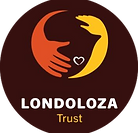
Londoloza Trust
About our support in Hwange

A strong educational foundation is paramount to the success of children's futures and generations to come
Hwange (the H is silent) is the flagship national park in Zimbabwe and also the largest. It covers over 14,500 Square Km (being about the size of Belgium). It is famous for its elephant population as well as easily viewable carnivores (like lions). It can easily be accessed from Victoria Falls Airport with all its 3 camps easily accessible with a good quality road.
While tourism numbers and revenue have been increasing with 60,000 tourists bringing in $1m in 2014, there a number of challenges that must be addressed. The current revenue is estimated to only meet 5% of the park's conservation programmes needs. With your help, our support, in line with the country's master plans including Hwange National Park Management Plan, the Hwange Sanyati Biodiversity Corridor project (HSBC) and Transfrontier Conservation areas (TFCAs).
Park Management Support Project
-
Infrastructure
-
Staff Welfare
-
Administration Capacity Building
Community Relations Programme
Heritage Preservation Programme
-
Nambya Ruins and San Art Preservation Initiative
-
Nambya Heritage Centre Initiative
-
Cultural Festivals Project
-
Local Literature Development Support Project
Environment Programme
-
Climate Change Mitigation Initiatives
-
Ecological Restoration Project
Volunteer initiative:
The initiative will benefit clients/volunteers with close encounters of nature and wildlife whilst at the same time helping National Parks with direct support in a number of ways. This could be a new way to promote tourism - helping to raise awareness of conservation and advertise the beauty of the National Parks which may be struggling to tap in to the old tourist attraction format.
We expect that this support will cover 4 main areas as below:
1. Road maintenance
The main tourist activity in Hwange is game drives (either self drive or guided) Most drives are day time ones but night drives are permitted in certain concession areas. In addition the park is setting itself apart by developing a "walking safari" experience.
Maintaining or expanding the road network in this extensive area of the park is critical to enhance the tourism experience as it will open up the park roads for game drives including during the wet season when many of the current roads are impassable.
Tourism numbers have been increasing about 25% per year since 2010 and yet the road network established in the 1960s and 70s has remained static with only a few additions.
Work is mainly required starting wih the "Nyamandolovu Pan Circuit" and the "Kennedy Ngweleshla" area as well as the road network near the Main Camp.

2. Waterholes
The second most important activity at Hwange is waiting at hides situated at water holes for wild life. Large parts of the park are however without wildlife in the dry season. In order to stimulate this activity, we would like to finance bore hole contruction (or maintenance) which would ensure water for the animals.

3. Field station assistance
The park's rangers need all sorts of equipment ranging from the most basic like radios, uniform and first aid kits to potentially innovtive concepts like drones and radio tags for certain animals. Some of the assistance we will provide includes:
-
Staff welfare assistance;
-
Information communication and Technology (ICT) capacity building;
-
Equipment and supplies support; and
-
Transport and logistics.


4. Research
The benefits of research in a park of this size are too numerous to list here but examples include:
-
Research and analysis of the Hwange ecosystem (vegetation mapping and biodiversity assessment);
-
Research into nearby archeological sites (in conjunction with the National Museums and Monuments of Zimbabwe (NMMZ) . The two main sites in the park are Mtoa and Bumboosi but there are numerous other stone age and historical sites that are yet to be explored;
-
Research to update tourist information about the park. As an example many maps of the area are from the 70s and are likely outdated and may not reflect the changes since then; and
-
Game population monitoring, such as Investigation into animal behaviours (such as lions continually attacking local communities).